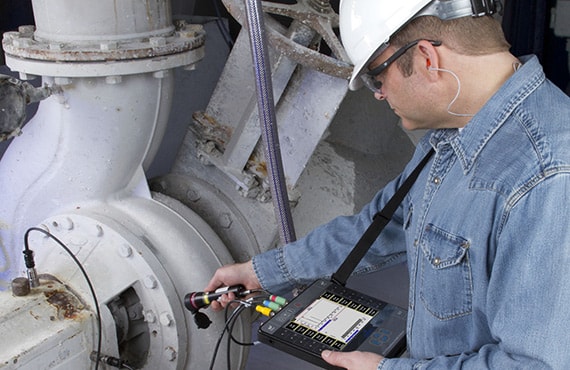ISO 11439 – Compressed Natural Gas Cylinder Burst Test
The ISO 11439 standard provides a robust methodology for performing burst tests on compressed natural gas (CNG) cylinders. This test is crucial in ensuring the integrity and safety of CNG cylinders used in oil and gas operations, transportation, and storage systems. The primary goal is to determine the maximum pressure at which a cylinder will fail without compromising its structural integrity.
Compressed Natural Gas cylinders are widely used for storing and transporting natural gas in pressurized containers. These cylinders play an essential role in ensuring the efficient distribution of natural gas across various sectors, including transportation and industrial processes. The safety of these cylinders is paramount to prevent accidents that could lead to explosions or leaks.
ISO 11439 specifies a hydrostatic burst test as a means to evaluate cylinder integrity. This method involves subjecting the cylinder to increasing pressure until it bursts, thereby determining its burst strength and ensuring compliance with design specifications. The test is conducted in accordance with rigorous procedures aimed at replicating real-world conditions while maintaining accuracy.
The process typically involves filling the CNG cylinder with water and gradually applying hydrostatic pressure. The rate of increase in pressure must be carefully controlled to ensure accurate measurement of the burst point. Once the cylinder bursts, the pressure is recorded and compared against the design specifications provided by the manufacturer or regulatory bodies.
Understanding the parameters involved in this test is crucial for ensuring reliable results. Key considerations include:
- Type of Cylinder: The specific type of cylinder being tested, whether it's a steel or composite material, affects the testing process and expected outcomes.
- Water Quality: The purity and quality of water used in the test are critical to avoid introducing contaminants that could affect the results.
- Rate of Pressure Increase: The rate at which pressure is applied must be consistent to ensure accurate burst point determination.
- Environmental Conditions: Temperature and humidity levels should be controlled to minimize their impact on the test results.
The testing process is meticulously documented, with detailed records kept for each test conducted. This documentation includes initial cylinder specifications, applied pressure data, burst point measurements, and any anomalies observed during the test.
| Applied Standards | Description |
|---|---|
| ISO 11439 | This standard outlines the procedure for performing hydrostatic burst tests on compressed natural gas cylinders. It ensures that the testing process is standardized and reliable. |
| ASTM D5760-20 | Complementary American Society for Testing and Materials (ASTM) standard, providing additional guidance on pressure vessel integrity tests. |
| EN 13489:2010 | This European Norm provides supplementary information that aligns with ISO 11439 for CNG cylinder testing. |
The implementation of these standards ensures that the burst test results are consistent and reliable across different laboratories. This consistency is vital for maintaining quality control and ensuring compliance with regulatory requirements.
Understanding the real-world implications of this test is essential for those involved in oil and gas operations. By adhering to ISO 11439, operators can ensure that CNG cylinders meet stringent safety standards, reducing the risk of accidents and enhancing overall operational reliability.
Applied Standards
| Applied Standards | Description |
|---|---|
| ISO 11439 | This standard outlines the procedure for performing hydrostatic burst tests on compressed natural gas cylinders. It ensures that the testing process is standardized and reliable. |
| ASTM D5760-20 | Complementary American Society for Testing and Materials (ASTM) standard, providing additional guidance on pressure vessel integrity tests. |
| EN 13489:2010 | This European Norm provides supplementary information that aligns with ISO 11439 for CNG cylinder testing. |
The application of these standards ensures consistent and reliable results across different laboratories. This consistency is crucial for maintaining quality control and ensuring compliance with regulatory requirements in the oil and gas sector.
Why Choose This Test
The ISO 11439 burst test offers several advantages that make it an indispensable tool in the oil and gas industry:
- Safety Assurance: By ensuring that CNG cylinders meet rigorous safety standards, this test helps prevent accidents and explosions.
- Regulatory Compliance: Adhering to international standards like ISO 11439 ensures compliance with local regulations and industry best practices.
- Quality Control: The standardized testing process allows for consistent quality control, ensuring that all cylinders meet the highest safety standards.
- Operational Reliability: By identifying potential weaknesses in CNG cylinders early on, this test enhances operational reliability and reduces downtime.
The burst test is particularly valuable in environments where safety and efficiency are paramount. Its ability to detect flaws before they become critical issues makes it an essential part of the quality control process for oil and gas companies.
Quality and Reliability Assurance
The ISO 11439 burst test is a critical component in maintaining high standards of safety and reliability within the oil and gas sector. By adhering to this standard, operators can ensure that CNG cylinders meet stringent safety requirements:
- Consistency: The standardized testing process ensures consistent results across different laboratories.
- Rigor: The rigorous procedures and controlled environmental conditions used in the test help maintain high-quality standards.
- Expertise: Our team of experienced professionals uses advanced equipment and techniques to ensure accurate and reliable test results.
- Documentation: Comprehensive documentation is maintained for each burst test conducted, providing detailed records that can be referenced for future audits or quality control checks.
The importance of these factors cannot be overstated. By ensuring consistency, rigor, expertise, and thorough documentation, we provide clients with peace of mind knowing their CNG cylinders are safe and reliable.





